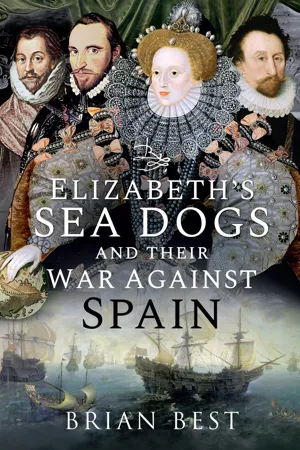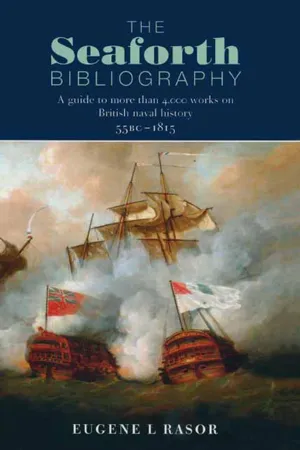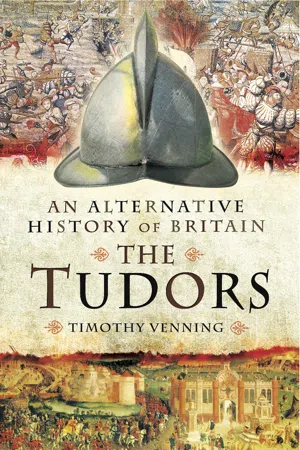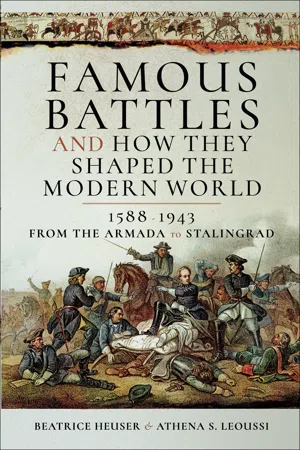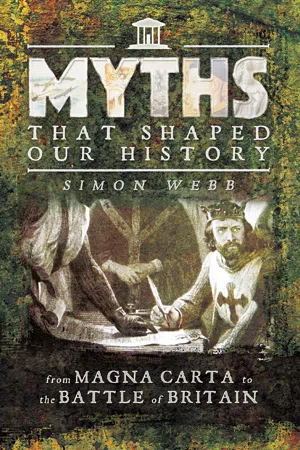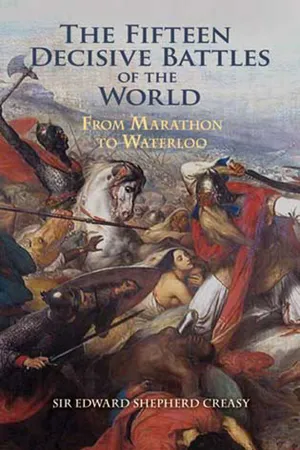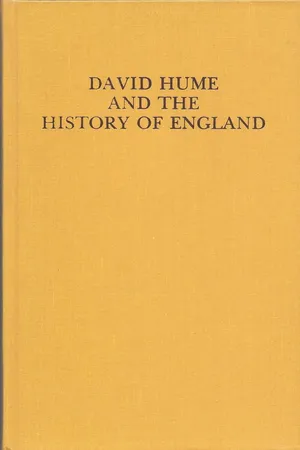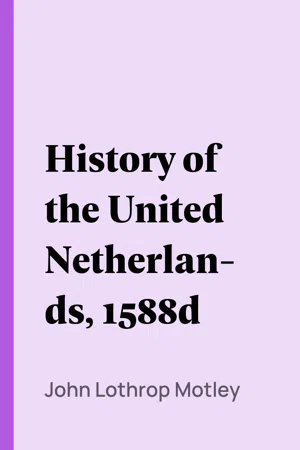History
Spanish Armada
The Spanish Armada was a fleet of ships sent by King Philip II of Spain in 1588 to invade England and overthrow Queen Elizabeth I. The Armada was defeated by the English fleet and harsh weather, marking a significant turning point in European history and establishing England as a dominant naval power.
Written by Perlego with AI-assistance
Related key terms
Related key terms
1 of 4
Related key terms
1 of 3
12 Key excerpts on "Spanish Armada"
- eBook - ePub
- Brian Best(Author)
- 2021(Publication Date)
- Frontline Books(Publisher)
Chapter ThirteenThe Spanish Armada
The Spanish PerspectiveOn 26 July 1582 Alvaro de Bezan, Marquis of Santa Cruz, won a victory over Filippo di Piero Strozzi’s mercenary fleet at the Battle of Ponte Delgada in the Azores and so set the seal on the invasion of England. On 9 August 1583 he wrote to Philip with the first suggestion that an Armada should be sent to invade England. The only problem was the damage sustained by his ships in the battle; it would take more than a year to repair and refit them. On 29 December 1585 Philip authorised Santa Cruz to assemble a fleet of armed ships in Lisbon but it was still below the required strength. To increase the number of warships and vessels available to carry provisions and munitions, he began impounding all merchant ships found in Spanish ports. Dozens of vessels – English, Dutch, German, French, Genoese, Neapolitan, Venetian and Danish – were conscripted to serve in the Armada. No fewer than twenty-three ships from Ragusan (Croatia) alone were seized and either armed with cannon or prepared to carry sup- plies. For decades Spain and England had been involved in a state of hostility but by July 1586 both Spain and England had declared war.News of the execution of Mary Queen of Scots did not reach Philip until March 1587, but when it did, it acted as a catalyst for the invasion of England. He did not conceal his claims to the double inheritance of the crowns of England and Scotland. His ambassador, Don Bernadino de Mendoza, wrote to him,God having been pleased to suffer this accursed nation to fall under His displeasure, not only in regard to spiritual affairs by heresy, but also in what relates to worldly affairs, by this terrible event, it is plain that the Almighty has wished to give your Majesty these two crowns [England and Scotland] as your entire possession.Under Francis Walsingham, the English were well aware of Spain’s preparations for a sea invasion from the nearby Spanish Netherlands. The numbers of troops were insufficient to invade England but the build-up of the Armada, with its large numbers of soldiers and ordnance, was to be one of the most pivotal naval encounters in the early days of naval combat. The ‘vast good-fortuned fleet’ (‘Grande y Felicisima Armada’) comprised 130 ships carrying over 30,000 men, including 19,295 soldiers, 8,450 mariners and 2,088 galley slaves, plus 3,000 noblemen, priests, physicians, pay-masters and officials. The 10,000 seasoned soldiers were bolstered by the reluctant indented peasants, shepherds and unemployed who made up the rest. They were to be joined by some 16,000 battle-hardened soldiers from the Spanish Netherlands, making a total of 35,000. - eBook - ePub
The Seaforth Bibliography
A Guide to More Than 4000 Works on British Naval History 55BC – 1815
- Eugene Rasor(Author)
- 2009(Publication Date)
- Seaforth Publishing(Publisher)
3704 ], 1983. Anglo-Dutch intelligence indicated Spanish preparation for another armada. The commanders were Lord Howard of Effingham and the Earl of Essex. The Dutch sent 24 ships. The Spanish defenders were commanded by the Duke of Medina Sidonia. Cadiz was sacked, but little else was achieved.The novelist, Winston Graham [1363 ], The Spanish Armadas , 1972, recounted the Armada of 1588 plus several other Spanish naval attempts, for example, in 1596 and 1597. Other works described an English operation in 1594 against Brest to prevent establishment of a Spanish base there, by John Nolan [2648 ], 1995; an account of the campaign culminating in a Spanish-Irish rebel surrender at Kinsale in 1602, ending an effort by Spain to aid a major Irish rebellion led by Hugh O’Neill, the history was by John Silke [3317 ], 1970, and an account of the final Anglo-Spanish peace by Robert Kenny [1886 ], 1970. The impact of that peace on Anglo-Spanish relations in the Caribbean was studied by Kenneth Andrews [105 ].Later Anglo-Spanish relations, in this case, naval relations, in the 18th century were reviewed by John Harbron [1487 ], 1990, and Jeremy Black [327 ], 1991. Coverage of Anglo-French antagonisms have been overemphasized at the expense of Anglo-Spanish relations. Contemporaries appreciated that the Spanish navy was a real force that could threaten the British. Harbon stressed the expertise, men, and materiel, which had and would continue to make Spain a formidable naval foe even as late as the battle of Trafalgar. See 7., I., 11.
1. The Navy of the Early StuartsG. THE 17th CENTURYElizabeth, the last of the Tudors, died in 1603 with no heirs. Succession was undisputed, to the Stuarts from Scotland, James I. Peace was negotiated with Spain in 1604. The navy was neglected. In the 1630s, the Ship Money controversy raised its head. By the 1640s, Civil War broke out. - eBook - ePub
The Tudors
An Alternative History of Britain
- Timothy Venning(Author)
- 2014(Publication Date)
- Pen & Sword Military(Publisher)
Chapter Eight 1588: a close-run thing? The Spanish Armada – could it have landed successfully, and what then? Elizabeth and 1588: myth and reality The clash between Elizabethan England, bastion of Protestantism, and the current Catholic ‘super-power’ Spain in 1588 came to define Elizabeth’s reign and role in popular memory for centuries. It was as much the defining moment of sixteenth-century English history as 1940 was of the twentieth century, as England stood alone against a brutal and malign tyranny intent on the conquest of Europe. Elizabeth I was portrayed in the national myth, recycled in the literary and artistic media and in school textbooks, as the ultimate symbol of sturdy and defiant English patriotism. Her famous speech to her troops at Tilbury as they awaited the Armada – ‘I may have the body of a weak and feeble woman but I have the heart and stomach of a king, and a king of England too’ 1 – came to assume the iconic status later accorded to Winston Churchill and his most famous Parliamentary speech in June 1940 – ‘we shall fight them on the beaches’. The successful defeat of the might of the European Catholic ‘super-power’ and its massive fleet was enshrined as the culmination of a heroic and inevitable struggle between the Protestant ‘Gloriana’ and her doughty ‘sea-dogs’, such as Sir Francis Drake, on the one hand and the repressive and implicitly (or explicitly) Satanic Catholic would-be invaders on the other. Victory against this menace – a power as notorious for its authoritarianism and atrocities as the Nazis – was England’s just reward, due on moral grounds as much as military. The religious element of the confrontation helped to build a determinist picture of the crisis in the accounts of it presented by writers in the following decades, a picture broadly being recycled as late as the Victorian and Edwardian eras - eBook - ePub
Famous Battles and How They Shaped the Modern World, 1588–1943
From the Armada to Stalingrad
- Beatrice Heuser, Athena S. Leoussi(Authors)
- 2018(Publication Date)
- Pen & Sword Military(Publisher)
33 When underwater archaeologists addressed the physical legacy of the Armada they found the Spanish ships less heavily armed than the English, and had not fired much heavy calibre ammunition, although they ran out of antipersonnel projectiles. American diplomatic historian Garrett Mattingley placed the Armada in the context of the Counter-Reformation. The Armada will remain a heroic English legend, but it takes on a more coherent form when viewed in a European perspective.While popular culture found endless opportunities to address the subject, in fiction and art, the technical difficulties of filming large scale sea battles encouraged directors to avoid placing the actual fighting on centre state. In Fire Over England (1937) the action took place at night. While Elizabeth: the Golden Age of 2007 made good use of CGI technology it made Sir Walter Raleigh, a figure well known to Americans, the hero of the fight. Raleigh actually spent the campaign ashore. This treatment prompted some well-merited mockery from The Simpsons . An episode in the twentieth season saw Homer Simpson playing Raleigh, accidentally setting the only English ship alight, which then burnt the entire Spanish fleet.Conclusion:
The Armada was placed at the heart of a rapidly evolving English national identity by a highly skilled group of statesmen, publicists, and artists, including some who were neither English nor Protestant. Their words and images defined the English sense of self; a sea-faring, Godly in a peculiarly English way, an outward looking people, free from continental tyranny, temporal and spiritual. That identity would evolve and broaden, notably with the Act of Union in 1707, but 1588 remained the iconic moment of the national story down to 1805, when another naval battle eclipsed the Elizabethan drama, a greater victory, a more dangerous opponent, a new national hero. Trafalgar took the national love affair with sea-power outdoors, clearing a space in central London for a Roman column that celebrated the efflorescence of an oceanic imperial destiny foretold in the heroics of 1588. It helped that Trafalgar was truly British, the heroes included men from all four parts of the kingdom, and a much wider British world. The Armada tercentenary in 1888 found the Empire at its apogee, prompting a major revival, notably around Plymouth, as long forgotten deeds were re-imagined: Drake the Pirate became Drake the Admiral, a proto-Nelson, his name graced great warships, and naval bases. The quatercentennial celebrations, for such they were, must be read as a reflection of rising national confidence, post-Falklands War, when rhetoric about Armadas and invasions had been strikingly common. That the four hundredth anniversary should herald the cusp of a new world order, one in which the global maritime world of Elizabethan enterprise became more resonant than it had been for generations, remains suggestive. British optimism, fuelled by the recent defeat of another Armada, rising prosperity, and growing public interest in the sea and history returned the story to centre stage. - eBook - ePub
Myths That Shaped Our History
From Magna Carta to the Battle of Britain
- Simon Webb(Author)
- 2017(Publication Date)
- Pen & Sword History(Publisher)
During the stay in La Coruna, Medina Sidonia again took the opportunity to write to Philip, suggesting that the unseasonable storms might be God’s way of hinting that he was not favourably disposed towards the invasion of England. As might have been expected, this idea did not appeal to the king, who replied quite sharply. ‘If this were an unjust war, one could indeed take this storm as a sign from our Lord to cease offending him. But being just as it is, one cannot believe that He will disband it.’ There was more in the same vein, all to the effect that God was wholeheartedly behind the Armada and guaranteed its success. Philip ended his letter brusquely, by saying that, ‘I have dedicated this enterprise to God. Pull yourself together and do your part.’ A month after putting in to La Coruna, the Spanish Armada set sail once more for the English Channel and if all went well, Spanish troops would be landing in Kent within a few weeks and then marching on London.Part of the myth associated with the Spanish Armada is the enormous disparity between the English and Spanish naval forces. It is perfectly true that the Armada was the greatest collection of ships ever seen in Europe, consisting of 130 vessels. The English, by way of comparison, had only 105 ships to confront this great force. This is not the whole picture, however. The majority of the Spanish ships were merchantmen, which had been adapted to carry troops. Some were merely urcas, literally ‘hulks’, which were only used to carry supplies. Of the 130 ships, only thirty-five or so were warships, designed for fighting at sea. Some of these were galleons, huge floating castles which may have had formidable firepower but were large and unwieldy to manoeuvre. The English had fewer ships, but more of them were actually warships. The English vessels were also lighter and easier to control. They could dodge about and make quick attacks on the slower moving ships of the Armada.On board the Armada, in addition to the sailors, were 19,000 soldiers who would join the 30,000 Spanish soldiers being assembled in the Netherlands to form the invasion force. The men in the Netherlands, commanded by the Duke of Parma, would cross the Channel in barges under the protection of the Armada. The ship-borne troops would then join them and an army of 50,000 would then move towards London.We come now to the one thing which most people know about the Spanish Armada; that Francis Drake was playing bowls when it was sighted and refused to take any action until he had finished the game, saying that there was plenty of time to do that and then beat the Spanish afterwards. This incident is an integral part of the myth, for it shows a perfect example of British sangfroid in a crisis. Illustration 8 is of Francis Drake, after he has received news of the Armada and has decided to finish his game of bowls. Surprisingly, for such a neat and satisfying little legend, this story is almost certainly true. - eBook - ePub
The Fifteen Decisive Battles of the World
from Marathon to Waterloo
- Creasy, Edward Shepherd, Sir(Authors)
- 2003(Publication Date)
- Perlego(Publisher)
As Napoleon, in 1805, waited with his army and flotilla at Boulogne, looking for Villeneuve to drive away the English cruisers, and secure him a passage across the Channel, so Parma, in 1588, waited for Medina Sidonia to drive away the Dutch and English squadrons that watched his flotilla, and to enable his veterans to cross the sea to the land that they were to conquer. Thanks to Providence, in each case England's enemy waited in vain!Although the numbers of sail which the queen's government, and the patriotic zeal of volunteers, had collected for the defence of England exceeded the number of sail in the Spanish fleet, the English ships were, collectively, far inferior in size to their adversaries; their aggregate tonnage being less by half than that of the enemy. In the number of guns, and weight of metal, the disproportion was still greater. The English admiral was also obliged to subdivide his force; and Lord Henry Seymour, with forty of the best Dutch and English ships, was employed in blockading the hostile ports in Flanders, and in preventing the Prince of Parma from coming out of Dunkirk.The orders of King Philip to the Duke de Medina Sidonia were, that he should, on entering the Channel, keep near the French coast, and, if attacked by the English ships, avoid an action, and steer on to Calais roads, where the Prince of Parma's squadron was to join him. The hope of surprising and destroying the English fleet in Plymouth, led the Spanish admiral to deviate from these orders, and to stand across to the English shore; but, on finding that Lord Howard was coming out to meet him, he resumed the original plan, and determined to bend his way steadily towards Calais and Dunkirk, and to keep merely on the defensive against such squadrons of the English as might come up with him.It was on Saturday, the 20th of July, that Lord Effingham came in sight of his formidable adversaries. The Armada was drawn up in form of a crescent, which from horn to horn measured some seven miles. There was a south-west wind; and before it the vast vessels sailed slowly on. The English let them pass by; and then, following in the rear, commenced an attack on them. A running fight now took place, in which some of the best ships of the Spaniards were captured; many more received heavy damage; while the English vessels, which took care not to close with their huge antagonists, but availed themselves of their superior celerity in tacking and manoeuvring, suffered little comparative loss. Each day added not only to the spirit, but to the number of Effingham's force. Raleigh, Oxford, Cumberland, and Sheffield joined him; and "the gentlemen of England hired ships from all parts at their own charge, and with one accord came flocking thither as to a set field, where glory was to be attained, and faithful service performed unto their prince and their country." - eBook - ePub
The Fifteen Decisive Battles of the World
From Marathon to Waterloo
- Edward Shepherd Creasy(Author)
- 2012(Publication Date)
- Dover Publications(Publisher)
As Napoleon, in 1805, waited with his army and flotilla at Boulogne, looking for Villeneuve to drive away the English cruisers, and secure him a passage across the Channel, so Parma, in 1588, waited for Medina Sidonia to drive away the Dutch and English squadrons that watched his flotilla, and to enable his veterans to cross the sea to the land that they were to conquer. Thanks to Providence, in each case England’s enemy waited in vain!Although the numbers of sail which the queen’s government, and the patriotic zeal of volunteers, had collected for the defence of England, exceeded the number of sail in the Spanish fleet, the English ships were, collectively, far inferior in size to their adversaries; their aggregate tonnage being less by half than that of the enemy. In the number of guns, and weight of metal, the disproportion was still greater. The English admiral was also obliged to subdivide his force; and Lord Henry Seymour, with forty of the best Dutch and English ships, was employed in blockading the hostile ports in Flanders, and in preventing the Prince of Parma from coming out of Dunkirk.The orders of King Philip to the Duke de Medina Sidonia were, that he should, on entering the Channel, keep near the French coast, and, if attacked by the English ships, avoid an action, and steer on to Calais roads, where the Prince of Parma’s squadron was to join him. The hope of surprising and destroying the English fleet in Plymouth, led the Spanish admiral to deviate from these orders, and to stand across to the English shore; but, on finding that Lord Howard was coming out to meet him, he resumed the original plan, and determined to bend his way steadily towards Calais and Dunkirk, and to keep merely on the defensive against such squadrons of the English as might come up with him.It was on Saturday, the 20th of July, that Lord Effingham came in sight of his formidable adversaries. The Armada was drawn up in form of a crescent, which from horn to horn measured some seven miles. There was a south-west wind; and before it the vast vessels sailed slowly on. The English let them pass by; and then, following in the rear, commenced an attack on them. A running fight now took place, in which some of the best ships of the Spaniards were captured; many more received heavy damage; while the English vessels, which took care not to close with their huge antagonists, but availed themselves of their superior celerity in tacking and manoeuvring, suffered little comparative loss. Each day added not only to the spirit, but to the number of Effingham’s force. Raleigh, Oxford, Cumberland, and Sheffield joined him; and “the gentlemen of England hired ships from all parts at their own charge, and with one accord came flocking thither as to a set field, where glory was to be attained, and faithful service performed unto their prince and their country.” - eBook - ePub
Fifteen Decisive Battles of the Western World (Barnes & Noble Library of Essential Reading)
From Marathon to Waterloo
- Edward Shepherd Creasy(Author)
- 2009(Publication Date)
- Barnes & Noble(Publisher)
CHAPTER XTHE DEFEAT OF THE Spanish Armada, A.D. 1588“In that memorable year, when the dark cloud gathered round our coasts, when Europe stood by in fearful suspense to behold what should be the result of that great cast in the game of human politics, what the craft of Rome, the power of Philip, the genius of Farnese could achieve against the island-queen, with her Drakes and Cecils — in that agony of the Protestant faith and English name.”— Hallam, Const. Hist., vol. i., p. 220.ON the afternoon of the 19th of July, A.D. 1588, a group of English captains was collected at the Bowling Green on the Hoe at Plymouth, whose equals have never before or since been brought together, even at that favorite mustering place of the heroes of the British navy. There was Sir Francis Drake, the first English circum-navigator of the globe, the terror of every Spanish coast in the Old World and the New; there was Sir John Hawkins, the rough veteran of many a daring voyage on the African and American seas, and of many a desperate battle; there was Sir Martin Frobisher, one of the earliest explorers of the Arctic seas, in search of that Northwest Passage which is still the darling object of England’s boldest mariners. There was the high admiral of England, Lord Howard of Effingham, prodigal of all things in his country’s cause, and who had recently had the noble daring to refuse to dismantle part of the fleet, though the queen had sent him orders to do so, in consequence of an exaggerated report that the enemy had been driven back and shattered by a storm. Lord Howard (whom contemporary writers describe as being of a wise and noble courage, skilful in sea matters, wary and provident, and of great esteem among the sailors) resolved to risk his sovereign’s anger, and to keep the ships afloat at his own charge, rather than that England should run the peril of losing their protection. - eBook - ePub
The Downfall of the Spanish Armada in Ireland
The Grand Armada Lost on the Irish Coast in 1588
- Ken Douglas(Author)
- 2009(Publication Date)
- Gill Books(Publisher)
Rosario at night when the rest were laid to. ‘He thinketh to cozen us of our shares of fifteen thousand ducats, but we will have our shares … He hath used certain speeches of me which I will make him eat again or I will make him spend the best blood in his belly’. If their internal rivalries were capable of generating so much heat, the enemy had better look out.When it came to the serious fighting off Gravelines it was this confidence in their superiority that defeated the Armada. The English naval guns of the time were not capable of sinking large wooden ships. They battered them, destroying masts and rigging, and hitting hulls hard enough to cause leaks. But the English were disappointed with their results: they expected to sink Spanish ships or at least smash them to pieces. In October an English master gunner, William Thomas, wrote a lengthy report to Burghley in which he lamented:What can be said but our sins was the cause that so much powder and shot spent, and so long time in fight, and in comparison thereof so little harm?Although only six great ships were lost, English gunners had done enough to convince the Spanish that they could not win here. Medina Sidonia’s letter to King Philip on 21 August seems so abject in the way it accepted defeat:This Armada was so completely crippled and scattered that my first duty to your Majesty seemed to save it, even at the risk we are running in undertaking this voyage, which is so long and in such high latitudes … experience has shown how little we could depend on the ships that remain, the Queen’s fleet being so superior to ours in this sort of fighting, in consequence of the strength of their artillery and the fast sailing of their ships.‘Brag countenance’ was their secret weapon. ON BOARD THE SPANISH FLEETOn Friday 12 August at 2 o’clock in the afternoon, the Spanish watched the pursuing English fleet slacken sail and put about. They were at 55°N - eBook - ePub
- David Hume(Author)
- 2020(Publication Date)
- Vintage Books(Publisher)
The armada had now reached Calais, and cast anchor before that place, in expectation that the duke of Parma, who had gotten intelligence of their approach, would put to sea and join his forces to them. The English admiral practised here a successful stratagem upon the Spaniards. He took eight of his smaller ships, and filling them with all combustible materials, sent them, one after another, into the midst of the enemy. The Spaniards fancied that they were fireships of the same contrivance with a famous vessel which had lately done so much execution in the Schelde near Antwerp; and they immediately cut their cables, and took to flight with the greatest disorder and precipitation. The English fell upon them next morning while in confusion; and besides doing great damage to other ships, they took or destroyed about twelve of the enemy.By this time, it was become apparent, that the intention for which these preparations were made by the Spaniards was entirely frustrated. The vessels provided by the duke of Parma were made for transporting soldiers, not for fighting; and that general, when urged to leave the harbor, positively refused to expose his flourishing army to such apparent hazard; while the English not only were able to keep the sea, but seemed even to triumph over their enemy. The Spanish admiral found, in many rencounters, that while he lost so considerable a part of his own navy, he had destroyed only one small vessel of the English; and he foresaw, that by continuing so unequal a combat, he must draw inevitable destruction on all the remainder. He prepared, therefore, to return homewards; but as the wind was contrary to his passage through the Channel, he resolved to sail northwards, and making the tour of the island, reach the Spanish harbors by the ocean. The English fleet followed him during some time; and had not their ammunition fallen short, by the negligence of the offices in supplying them, they had obliged the whole armada to surrender at discretion. The duke of Medina had once taken that resolution, but was diverted from it by the advice of his confessor. This conclusion of the enterprise would have been more glorious to the English; but the event proved almost equally fatal to the Spaniards. A violent tempest overtook the armada after it passed the Orkneys; the ships had already lost their anchors, and were obliged to keep to sea: the mariners, unaccustomed to such hardships, and not able to govern such unwieldy vessels, yielded to the fury of the storm, and allowed their ships to drive either on the western isles of Scotland, or on the coast of Ireland, where they were miserably wrecked. Not a half of the navy returned to Spain; and the seamen as well as soldiers who remained, were so overcome with hardships and fatigue, and so dispirited by their discomfiture, that they filled all Spain with accounts of the desperate valor of the English and of the tempestuous violence of that ocean which surrounds them. - eBook - ePub
- John Lothrop Motley(Author)
- 2004(Publication Date)
- Perlego(Publisher)
Seeing the enemy approaching, Medina Sidonia ordered his whole fleet to luff to the wind, and prepare for action. The wind shifting a few points, was now at W.N.W., so that the English had both the weather-gage and the tide in their favour. A general combat began at about ten, and it was soon obvious to the Spaniards that their adversaries were intending warm work. Sir Francis Drake in the Revenge, followed by, Frobisher in the Triumph, Hawkins in the Victory, and some smaller vessels, made the first attack upon the Spanish flagships. Lord Henry in the Rainbow, Sir Henry Palmer in the Antelope, and others, engaged with three of the largest galleons of the Armada, while Sir William Winter in the Vanguard, supported by most of his squadron, charged the starboard wing.The portion of the fleet thus assaulted fell back into the main body. Four of the ships ran foul of each other, and Winter, driving into their centre, found himself within musket-shot of many of their most formidable' ships."I tell you, on the credit of a poor gentleman," he said, "that there were five hundred discharges of demi-cannon, culverin, and demi-culverin, from the Vanguard; and when I was farthest off in firing my pieces, I was not out of shot of their harquebus, and most time within speech, one of another."The battle lasted six hours long, hot and furious; for now there was no excuse for retreat on the part of the Spaniards, but, on the contrary, it was the intention of the Captain-General to return to his station off Calais, if it were within his power. Nevertheless the English still partially maintained the tactics which had proved so successful, and resolutely refused the fierce attempts of the Spaniards to lay themselves along-side. Keeping within musket-range, the well-disciplined English mariners poured broadside after broadside against the towering ships of the Armada, which afforded so easy a mark; while the Spaniards, on their part, found it impossible, while wasting incredible quantities of powder and shot, to inflict any severe damage on their enemies. Throughout the action, not an English ship was destroyed, and not a hundred men were killed. On the other hand, all the best ships of the Spaniards were riddled through and through, and with masts and yards shattered, sails and rigging torn to shreds, and a north-went wind still drifting them towards the fatal sand-batiks of Holland, they, laboured heavily in a chopping sea, firing wildly, and receiving tremendous punishment at the hands of Howard Drake, Seymour, Winter, and their followers. Not even master-gunner Thomas could complain that day of "blind exercise" on the part of the English, with "little harm done" to the enemy. There was scarcely a ship in the Armada that did not suffer severely; for nearly all were engaged in that memorable action off the sands of Gravelines. The Captain-General himself, Admiral Recalde, Alonzo de Leyva, Oquendo, Diego Flores de Valdez, Bertendona, Don Francisco de Toledo, Don Diego de Pimentel, Telles Enriquez, Alonzo de Luzon, Garibay, with most of the great galleons and galeasses, were in the thickest of the fight, and one after the other each of those huge ships was disabled. Three sank before the fight was over, many others were soon drifting helpless wrecks towards a hostile shore, and, before five o'clock, in the afternoon, at least sixteen of their best ships had been sacrificed, and from four to five thousand soldiers killed. - eBook - ePub
- James Johonnot(Author)
- 2005(Publication Date)
- Perlego(Publisher)
85. Meanwhile, so much as remained of the Invincible Armada was buffeted to and fro by the resistless gale, like a shuttlecock between two invisible players. The monster left its bones on the iron-bound shore of Norway and on the granite cliffs of the Hebrides. Its course could be traced by its wrecks. Day followed day, and still God's wrath endured. On the 5th of August Admiral Oguendo, in his flag-ship, together with one of the great galliasses and thirty-eight other vessels, were driven by the fury of the tempest upon the rocks and reefs of Ireland, and nearly every soul on board perished. Of one hundred and thirty-four vessels which, gay with gold and amid triumphal shouts and loud music, had sailed from Corunna July 12th, only fifty-three battered and useless hulks returned to the ports of Spain.86. The fate and exploits of the Armada are graphically summed up in the emphatic language of Sir Francis Drake. "It is happily manifested," he says, "indeed, to all nations how their navy which they termed invincible, consisting of nearly one hundred and forty sail of ships, were by thirty of her Majesty's ships of war, and a few of our own merchants, by the wise and advantageous conduct of Lord Charles Howard, High Admiral of England, beaten and shuffled together from Lizard in Cornwall to Portland, from Portland to Calais; and from Calais, driven by squibs from their anchors, were chased out of sight of England, round about Scotland and Ireland. With all their great and terrible ostentation, they did not, in all their sailing round about England, so much as sink or take one ship, bark, pinnace, or cock-boat of ours, or even burn so much as one sheep-cote on the land."CHAPTER VIII.
FREEDOM'S VOYAGE TO AMERICA.
DISSENT AND PERSECUTION.
1. Through the middle ages England, like the rest of the world, had been in full communion with the Church of Rome. When the Reformation had swept over Europe and left dissent to crystallize into various Protestant sects, England too had dissented, and her king had established the Anglican Church. This church, when it assumed final form, had for its supreme head, not the pope, but the king, and under him the clergy held their offices. The Roman Catholic ritual was not, as in some of the European sects, entirely given up, but was modified to suit the new order. And when the change was effected, the new ministers firm in their positions, the new service-books ready for use, then the Catholics were summarily ordered to embrace the reformed faith.
Index pages curate the most relevant extracts from our library of academic textbooks. They’ve been created using an in-house natural language model (NLM), each adding context and meaning to key research topics.
Explore more topic indexes
Explore more topic indexes
1 of 6
Explore more topic indexes
1 of 4
